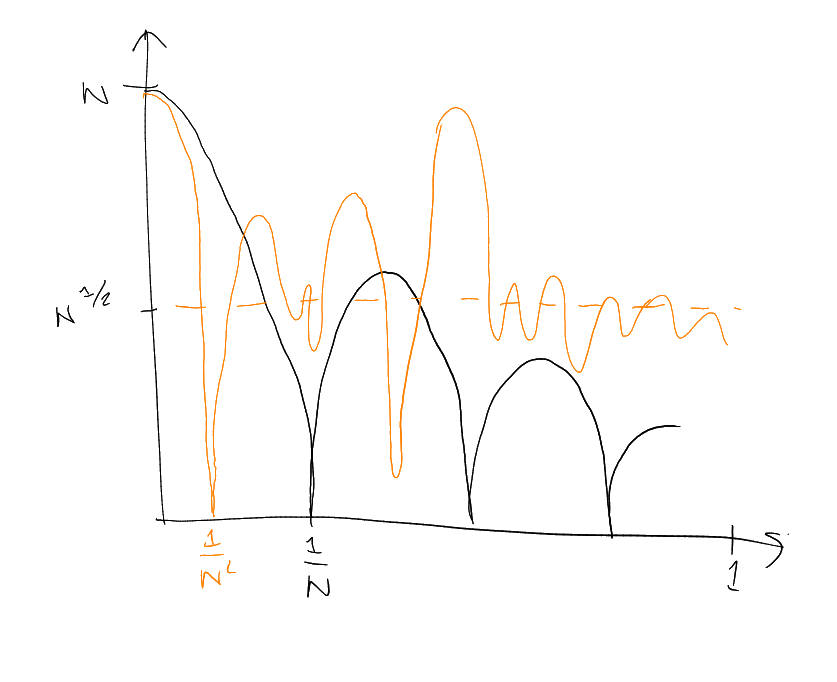1 What is Fourier Restriction Theory?
Main object: ,
,
.
Notation.
We will write .
is a spatial
variable, and
is the frequency variable.
The frequencies (or Fourier transform) of
is restricted to a set
(where
we will always be finite – so no need to worry about convergence issues).
Goal: Understand the behaviour of
in terms of properties of .
Example.
-
(i)
Schrödinger equation:
Easy: ,
with initial data .
.
Then since ,
we might consider .
-
(ii)
Dirichlet polynomials:
|
|
with ,
partial sums of Riemann Zeta function. We might consider .
Both avoid linear structure.
is a
concave set (getting closer and closer together).
lie on a
parabola.
Guiding principle: if properties of an object avoid (linear) structure, then we expect some random or average
behaviour.
The above examples avoid linear structure using some notion fo curvature. See Bourgain
paper:
extra
behaviour.
Square root cancellation: If we add
randomly times, then we
expect a quantity with size .
Theorem 1.1 (Khinchin’s inequality).
Assuming that:
Then |
|
Notation.
means
but the constant
may depend on .
Proof.
Without loss of generality, .
Without loss of generality, .
: want to
show .
|
|
What about general exponents ?
|
|
The equality here is the Layer cake formula, which is true for any .
Let . Study the
random variable .
|
|
Fact:
(to check, use the Taylor series). So we can get
By symmetry,
Choose :
|
|
Use in Layer cake:
|
|
Lower bound: use Hölder’s inequality. .
|
|
.
□
Can you find a more intuitive proof? E-mail Dominique Maldague.
Corollary.
.
Useful for exercises!
Return to Fourier restriction context.
Both are
-periodic. So
study them on .
,
for
.
,
for
.
|
|
|
|
|
|
|
|
For the first one, (organised
behaviour) dominates as soon as ,
and for the second one,
dominates for
(“square root cancellation behaviour lasts for longer”).

